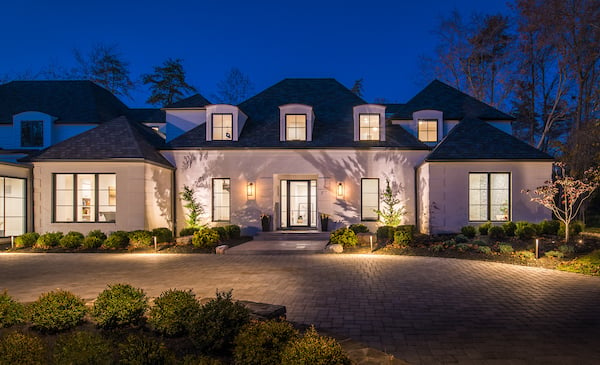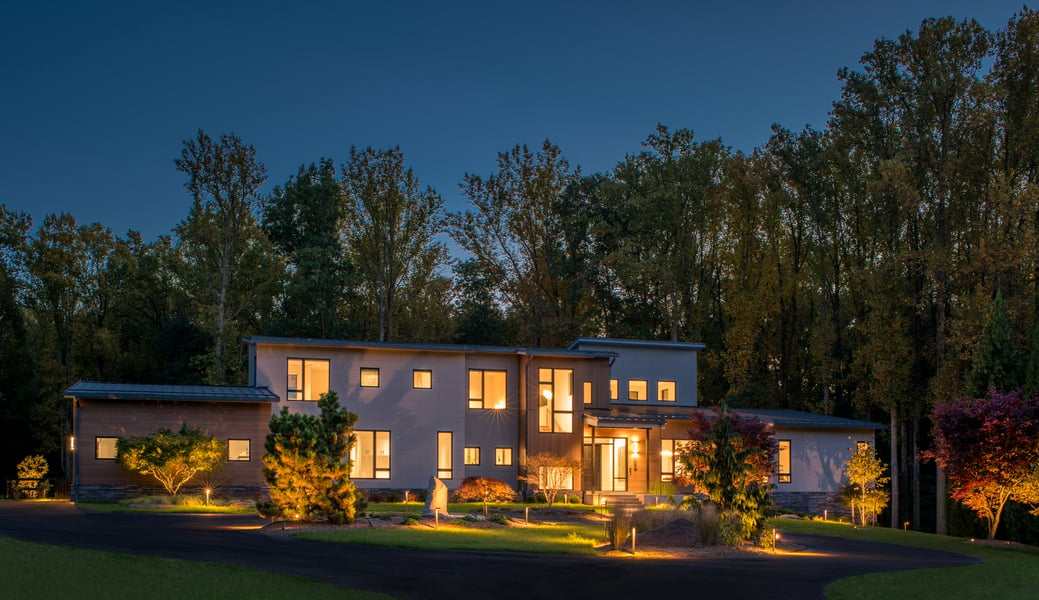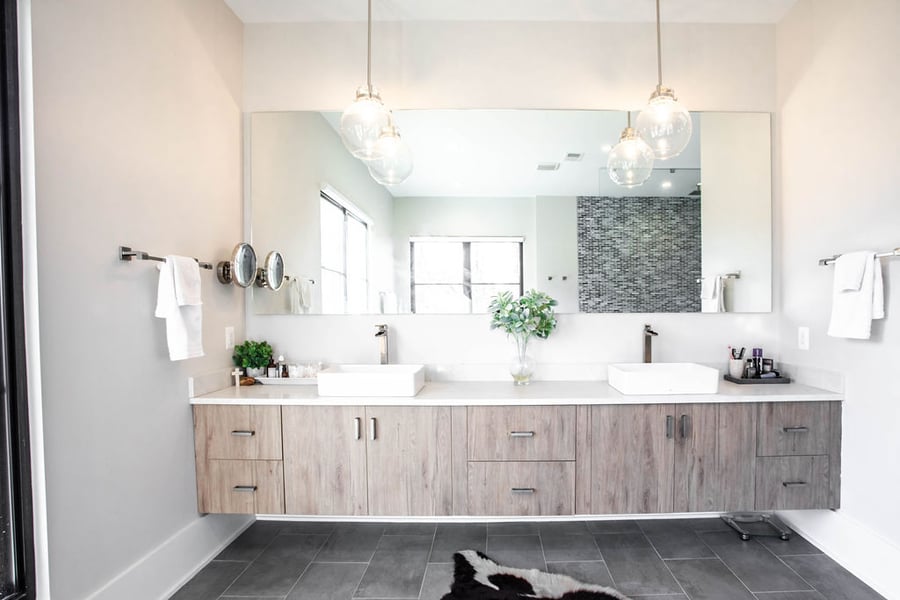
Transitional home design is a new take on two classic styles, blending the clean lines and functionality of modern design with the warmth and comfort of traditional elements. This design approach creates a harmonious balance, offering a warmer version of modern home design often referred to as "soft modern." It incorporates various elements from both styles, resulting in spaces that are both contemporary and functional.
What is Transitional Home Design?
Transitional home design combines the functional layouts and sleek aesthetics of modern design with the warmth and comfortability of traditional design. Transitional homes incorporate more variety in materials and design elements, creating a balanced and inviting look.
Key Elements of Transitional Home Design
Incorporating natural elements is a significant aspect of transitional design. These elements bring warmth and texture, creating a more inviting and cozy environment. Key features include:
Organic Textures: Textiles like linen, cotton, and wool can add a natural feel to the space.
Greenery: Plants and natural foliage can enhance the organic appeal of transitional interiors.
Natural Materials: Wood, stone, and brick are often used to add texture and warmth.
To make the space feel more cozy and lived-in, transitional design incorporates various textures and colors:
Layered Textures: Combining different textures, such as smooth marble with rough-hewn wood, adds depth to the design.
Soft Furnishings: Plush rugs, cushions, and throws in a variety of fabrics and colors can make a space feel more welcoming.
Accent Colors: While the overall palette may be neutral, pops of color in art, accessories, or furniture can add personality and vibrancy.
Elements of Modern Design
Modern design is characterized by its minimalist aesthetic, with a focus on function, simplicity, and clean lines. Key features include:
Neutral Color Palettes: Modern interiors often utilize monochromatic colors, favoring shades of white, gray, and black.
Minimal Ornamentation: Emphasis on simplicity with little to no decorative detailing.
Open Floor Plans: Spaces are typically open and airy, with an emphasis on natural light.
Modern Materials: Use of engineered materials such as steel, glass, and concrete.
Modern HOME Exteriors
Modern home exteriors are known for their monochromatic color schemes and use of engineered materials. They often feature:
Monochromatic Colors: A uniform color palette, typically in shades of white, gray, or black.
Flat Roofs: Modern roofs are often flat and boxy, contributing to the minimalist aesthetic.
Large Windows: Expansive windows without mullions or dividers to maximize natural light and create a seamless connection with the outdoors.
Designing a Transitional Home: Balancing Modern and Traditional Elements
When designing a transitional home, the goal is to create a space that feels both modern and warm. Here are some tips to achieve this balance:
Interior:
Mix Materials: Blend modern materials like glass and steel with natural elements like wood and stone. For example, a sleek kitchen with marble countertops can be paired with wooden cabinets and a stone backsplash.
Layer Textures: Incorporate a variety of textures through furnishings and decor. Soft textiles, woven rugs, and textured wall treatments can add depth and interest.
Neutral Base with Color Accents: Start with a neutral color palette and introduce color through accessories, art, and furniture. This approach keeps the space feeling calm and cohesive while allowing for personal expression.
Open and Airy Layouts: Maintain the open floor plans typical of modern design but soften the spaces with comfortable furniture arrangements and thoughtful decor.
Exterior:
Blend Materials: Use a combination of modern and traditional materials on the exterior. For instance, a home might feature sleek metal panels alongside rustic brick or cedar siding.
Varied Rooflines: Incorporate more traditional roof shapes, such as gables or pitched roofs, to add character and interest.
Window Treatments: Choose windows that offer both form and function. Large windows can be complemented with mullions or decorative trim to bridge the modern and traditional styles.
By combining these elements, transitional exteriors achieve a cohesive look that feels both contemporary and timeless.
The Appeal of Transitional Home Design
Transitional home design offers the best of both worlds, combining the sleek, clean lines of modern design with the warmth and texture of traditional elements. This style is perfect for homeowners who appreciate the simplicity and functionality of modern design but also desire a space that feels cozy and inviting.
By thoughtfully blending materials, textures, and colors, transitional design creates a harmonious and balanced environment that is both stylish and comfortable. Whether you're building a new home or updating an existing space, the transitional style offers endless possibilities for creating a home that reflects your unique taste and lifestyle.
At AV Architects + Builders, we specialize in creating custom homes that embody the principles of transitional design. Our team is dedicated to helping you achieve a beautiful and functional living space that seamlessly blends modern sophistication with timeless warmth.
Sofia Alonso is currently the Content Manager at AV Architects + Builders, a family-owned architect-led design-build firm specializing in creating modern style homes for clients in Northern Virginia. Having been with the company since 2019, Sofia has demonstrated a strong commitment to the firm's ethos of providing high-end, luxury living experiences. Sofia holds a Bachelor of Science in Interdisciplinary Studies with a focus on Writing from the University of Virginia. With Sofia contributing to the firm's content strategy, clients can look forward to insightful, educational content that perfectly aligns with the luxurious, high-quality living experiences that AV Architects + Builders is renowned for.
Topics:







